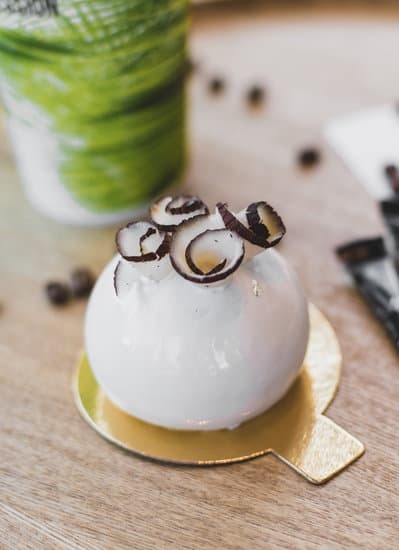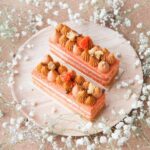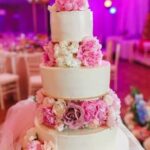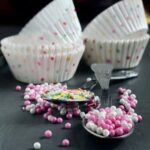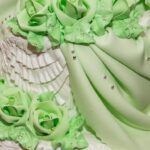Are you looking to elevate your cakes with beautifully decorated icing? If so, learning how to make icing for cake decorating recipes is essential. Icing not only adds sweetness but also enhances the visual appeal of a cake, making it a focal point at any celebration.
There are various types of frosting and icing that can be used for cake decorating, each offering unique flavors and textures. From buttercream to royal icing, the options are endless. Understanding the differences between these types can help you choose the right one for your specific baking needs.
In this article, we will explore the essential ingredients needed to create the perfect icing for cake decorating. Additionally, we will provide step-by-step instructions on how to make buttercream icing, along with valuable tips and tricks for achieving the ideal consistency for decorating. Whether you are a beginner or a seasoned baker, mastering the art of icing is sure to take your cakes to the next level.
Essential Ingredients for Making Icing for Cake Decorating
When it comes to making the perfect icing for cake decorating, having the right ingredients is essential. Whether you prefer a silky buttercream or a glossy royal icing, there are key components that are necessary for creating the ideal texture and flavor. Understanding the role of each ingredient and how they work together will help you achieve professional-looking results every time.
Buttercream Basics
One of the most popular choices for cake decorators, buttercream icing is known for its creamy texture and ability to hold intricate designs. To make a basic buttercream, you will need unsalted butter, powdered sugar (also known as confectioners’ sugar), vanilla extract, and a pinch of salt. These simple ingredients come together to create a smooth and spreadable icing that can be easily colored and flavored to suit your design needs.
Royal Icing Essentials
For more intricate decorations like piping flowers or writing messages on cakes, royal icing is often preferred due to its smooth finish when dried. The key ingredients in royal icing are egg whites (or meringue powder), powdered sugar, and lemon juice or cream of tartar.
This type of icing dries hard and is perfect for creating detailed designs that require precision. Mastering the art of royal icing can take some practice, but once you get the hang of it, the possibilities are endless for decorating your cakes with intricate patterns and designs.
Step-by-Step Instructions on How to Make Buttercream Icing
Buttercream icing is a versatile and popular choice for cake decorating due to its smooth texture and sweet flavor. To make your own buttercream icing at home, you will need a few simple ingredients: unsalted butter, confectioners’ sugar, vanilla extract, and heavy cream. This classic buttercream recipe is perfect for piping, spreading, and creating intricate designs on cakes.
Start by beating softened unsalted butter in a mixing bowl until it becomes creamy and smooth. Gradually add in confectioners’ sugar, sifting it as you go to prevent lumps in the icing. For a standard buttercream recipe, you’ll want to use about 4 cups of confectioners’ sugar for every cup of butter. Add vanilla extract for flavoring and a touch of heavy cream to achieve the desired consistency.
Once all the ingredients are combined, continue beating the mixture on medium-high speed until the icing is light and fluffy. If the icing is too thick, you can add more heavy cream gradually until it reaches the right texture for spreading or piping onto your cakes. On the other hand, if the icing is too thin, simply add more confectioners’ sugar until it thickens up. Experiment with different consistencies to find what works best for your cake decorating needs.
Overall, making buttercream icing is a straightforward process that allows for creativity in both flavoring and coloring. You can easily customize your buttercream by adding different extracts like almond or lemon, as well as incorporating food coloring to achieve vibrant hues. Whether you’re a beginner or experienced decorator, mastering the art of making buttercream icing opens up endless possibilities for decorating beautiful cakes that taste as good as they look.
Tips and Tricks for Achieving the Perfect Consistency for Decorating
When it comes to cake decorating, one of the most crucial aspects is achieving the perfect consistency for your icing. Whether you are using buttercream, royal icing, or any other type of frosting, the right consistency can make all the difference in creating beautifully decorated cakes. So, how do you ensure that your icing is just the right texture for piping and decorating?
One key tip for achieving the perfect consistency is to pay attention to the ratio of liquid to dry ingredients in your icing recipe. Adding too much liquid can result in a runny icing that won’t hold its shape when piped onto a cake.
On the other hand, adding too much powdered sugar can make your icing too stiff and difficult to work with. It’s important to follow your recipe closely and adjust the ingredients as needed to achieve the desired consistency.
Another trick for achieving the perfect consistency is to test your icing before you start decorating. Take a small amount of icing and try piping it onto a plate or parchment paper. If it’s too stiff, you can gradually add more liquid (such as milk or water) until you reach the right consistency.
If it’s too runny, you can add more powdered sugar until it thickens up. This way, you can make adjustments before you start decorating your actual cake.
In addition, consider using gel food coloring instead of liquid food coloring when tinting your icing. Gel colors are more concentrated and will not change the consistency of your icing as much as liquid colors would. This will help you achieve vibrant colors without compromising the texture of your icing. With these tips and tricks in mind, you’ll be able to consistently create beautifully decorated cakes with just the right texture for piping and decorating.
Creative Ideas for Coloring and Flavoring Your Icing
When it comes to cake decorating, one of the most fun and creative parts is choosing how to color and flavor your icing. Adding a pop of color or a unique flavor can truly elevate the look and taste of your cake. Here are some creative ideas for coloring and flavoring your icing that will take your creations to the next level.
Natural Food Coloring
One way to add vibrant colors to your icing without artificial dyes is by using natural food coloring. You can make your own natural food coloring using ingredients like beets for red, turmeric for yellow, spinach for green, and blueberries for purple. These natural alternatives not only add beautiful hues to your icing but also provide a healthier option for those who prefer to avoid synthetic dyes.
Flavor Infusions
To give your icing a delicious twist, consider infusing it with different flavors. You can add extracts like vanilla, almond, or peppermint to enhance the taste of your icing. For more creative flavors, you can experiment with adding citrus zest, espresso powder, or even liqueurs like Grand Marnier or Kahlua. These unique flavor combinations will delight your taste buds and impress your guests.
Ombre and Marbled Effects
For a visually stunning effect, try creating ombre or marbled designs with your colored icing. Ombre involves blending varying shades of the same color from light to dark, while marbling creates swirls of different colors throughout the icing.
These techniques are easy to achieve with a little practice and can add an elegant touch to any cake design. Experiment with different color combinations and patterns to create eye-catching masterpieces that will leave a lasting impression on everyone who sees them.
Using Different Piping Techniques for Decorating Cakes
Decorating cakes with icing can be a fun and creative process, and using different piping techniques can take your cake decorating skills to the next level. Whether you’re a beginner or a seasoned baker, mastering piping techniques can help you create beautifully decorated cakes for any occasion.
One of the most common piping techniques for cake decorating is the classic rosette. To create a rosette, simply attach a star-shaped piping tip to a piping bag filled with your desired icing, hold the bag at a 90-degree angle to the cake surface, and squeeze out the icing in a spiral motion starting from the center and working your way outwards. Practice makes perfect when it comes to creating uniform and evenly spaced rosettes on your cakes.
Another popular piping technique is creating intricate designs with lace or filigree patterns. This technique requires a steady hand and some patience, but the results are truly stunning. Use a fine round tip to pipe delicate lines onto your cake, creating lace-like patterns or intricate filigree designs. This technique is perfect for adding an elegant touch to wedding cakes or other special occasion desserts.
For those looking to add some dimension to their cake decorations, try using the basketweave piping technique. This technique involves alternating vertical and horizontal lines of icing to create a woven basket effect on the cake’s surface. With some practice and precision, you can achieve a beautiful textured look that will impress your guests.
When exploring different piping techniques for decorating cakes, remember to start with practicing basic designs before moving on to more complex patterns. With time and patience, you’ll soon be able to create professional-looking cakes that are as beautiful as they are delicious.
| Piping Technique | Description |
|---|---|
| Rosette | Create spiraling rosette designs by squeezing icing in circular motion from center outwards. |
| Lace/Filigree | Use fine round tip for delicate lace-like patterns or detailed filigree designs on cakes. |
| Basketweave | Alternating vertical and horizontal lines of icing for woven basket effect on cake’s surface. |
Troubleshooting Common Issues When Making Icing
When it comes to making icing for cake decorating, there are times when things don’t quite go as planned. It’s important to be prepared for common issues that may arise during the process. One common problem is when your icing turns out too runny or too stiff.
If your icing is too runny, try adding more powdered sugar gradually until you reach the desired consistency. On the other hand, if your icing is too stiff, add a small amount of liquid (such as milk or water) until it reaches the right texture.
Another issue that decorators often encounter is air bubbles in their icing. Air bubbles can create a bumpy surface on your cake when you’re decorating, which can be frustrating. To prevent this, make sure to properly mix your icing and avoid overbeating it, as this can introduce more air into the mixture. Once you’ve applied the icing to your cake, use a spatula or offset spatula to gently smooth out any air pockets.
Coloring your icing can also present challenges, especially if you’re aiming for a specific shade. It’s important to use gel food coloring rather than liquid food coloring, as gel colors are more concentrated and won’t change the consistency of your icing as much.
Start with a small amount of gel color and mix it in thoroughly before adding more if needed. Remember that colors tend to darken as they sit, so allow your colored icing to rest for a few minutes before adjusting the shade.
By being aware of these common issues and knowing how to troubleshoot them effectively, you’ll be better equipped to tackle any obstacles that come up while making icing for cake decorating recipe. With practice and patience, you can achieve the perfect consistency and finish for all your decorating projects.
Recipes for Different Types of Icing
When it comes to cake decorating, the type of icing you choose can make all the difference. From elegant royal icing to indulgent cream cheese frosting, each recipe offers a unique flavor and texture that can elevate your cakes to new heights.
In this guide on how to make icing for cake decorating recipes, we have covered essential ingredients, step-by-step instructions on making buttercream icing, tips for achieving the perfect consistency, creative ideas for coloring and flavoring, different piping techniques, and troubleshooting common issues.
For those looking to try their hand at different types of icing recipes, we have provided a range of options from traditional royal icing to tangy cream cheese frosting. Each recipe offers a distinct taste profile and texture that can complement your cakes in various ways. Whether you prefer the smooth finish of buttercream or the crisp look of royal icing, experimenting with different recipes can add a fun element to your cake decorating endeavors.
In conclusion, mastering the art of making icing for cake decorating is a rewarding journey that allows you to unleash your creativity and elevate your baked creations. By following our guide on essential ingredients, step-by-step instructions, tips, and tricks, as well as exploring different types of icing recipes from royal icing to cream cheese frosting, you can take your cake decorating skills to the next level.
So go ahead and whip up a batch of your favorite icing – get ready to impress with your beautifully decorated cakes.
Frequently Asked Questions
What Is the Best Icing for Cake Decorating?
The best icing for cake decorating largely depends on personal preference and the desired outcome of the cake. Buttercream icing is a popular choice due to its versatility, ease of use, and delicious flavor.
Fondant is another option that provides a smooth, firm finish for intricate designs. Royal icing is commonly used for detailed decorations on cakes, cookies, and gingerbread houses.
How to Make a Cake Frosting at Home?
Making cake frosting at home can be a simple and rewarding process. One common method involves making buttercream frosting using butter, powdered sugar, vanilla extract, and milk or cream. Cream cheese frosting is another popular option made with cream cheese, butter, powdered sugar, and vanilla extract. Whipped cream frosting can be whipped up using heavy cream, sugar, and vanilla extract.
How Do You Make Smooth Icing for Cake Decorating?
Achieving smooth icing for cake decorating requires patience and practice. To create a smooth finish with buttercream icing, it’s important to start with a crumb coat to seal in any loose crumbs before applying the final layer of icing. Use a bench scraper or offset spatula to apply even pressure while smoothing the sides and top of the cake.
Chilling the cake between coats can also help achieve a flawless finish. Fondant provides an inherently smooth surface but requires careful rolling and application techniques for best results.

Welcome to our cake decorating blog! My name is Destiny Flores, and I am the proud owner of a cake decorating business named Cake Karma. Our mission is to provide delicious, beautiful cakes for all occasions. We specialize in creating custom cakes that are tailored specifically to each customer’s individual needs and tastes.

